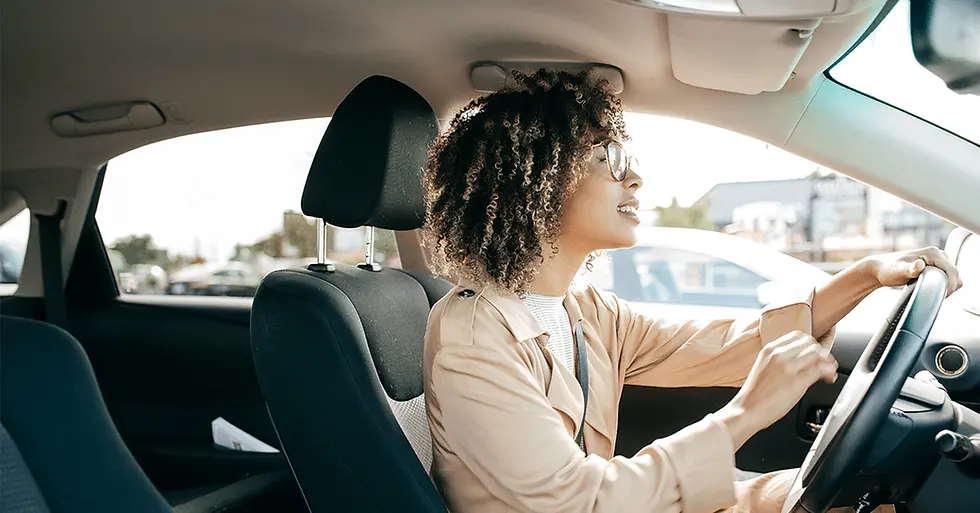The Real Reason You Shouldn’t Ride the Clutch
- Elliot Sharp

- Feb 25
- 4 min read
If you’ve ever sat at a red light with your foot on the clutch pedal or crept up a hill holding the clutch in the ‘biting point’ position, you’re not alone.
“Riding the clutch” is one of the most common habits among drivers, especially those who learned on a manual transmission, but it’s also one of the most damaging. Beyond just wear and tear, it impacts your vehicle’s longevity, your safety, and even your fuel economy.
So what exactly is clutch riding, and why should it be on every driver’s ‘don’t’ list in 2025? Here’s what the data says.

What Is “Riding the Clutch”?
Riding the clutch refers to the act of keeping partial pressure on the clutch pedal without fully disengaging or releasing it. It often happens in stop start traffic, when pulling away on a slope, or during prolonged low speed manoeuvres.
Instead of allowing the clutch plates to fully engage or disengage, you leave them in a constant state of friction. This partial engagement leads to gradual but severe deterioration.
The Mechanics Behind the Problem
The clutch in a manual vehicle acts as a bridge between the engine and the gearbox. When you depress the clutch pedal, the plates separate, interrupting the flow of power. When released, they reconnect and transfer energy to the wheels.
When you ride the clutch, you keep the plates in partial contact, causing them to spin at different speeds. This generates heat and excessive friction. Over time, this heat wears down the clutch disc, pressure plate and release bearing.
Clutch replacements don’t come cheap. According to a 2024 survey by Which?, the average cost of clutch replacement in the UK is between £450 and £1,200, depending on the make and model of the vehicle. For premium vehicles, the figure can go even higher.
Safety Concerns You Might Overlook
Riding the clutch isn’t just about mechanical wear, it has road safety implications too.
Unpredictable Control: Partial clutch engagement reduces your ability to respond quickly. If an emergency stop or rapid acceleration is needed, your powertrain is in a weakened state.
Rollback Risks: On a hill, using the clutch instead of the handbrake to hold position is risky. It creates uncertainty for drivers behind you and increases the chance of a rollback accident.
Driver Fatigue: Constant foot engagement leads to ankle and knee fatigue, decreasing overall reaction time and concentration on longer journeys.
Environmental & Fuel Efficiency Impact
You might think only automatic transmissions are subject to fuel inefficiency, but poor clutch habits in manuals cause a surprising amount of unnecessary fuel burn.
Data from the RAC Foundation shows that manual cars driven inefficiently consume up to 15% more fuel. Holding the clutch halfway is one of the main contributors, as the engine works harder to push power through a partially engaged drivetrain.
Additionally, clutch wear leads to lower overall vehicle efficiency. A slipping clutch may cause RPMs to spike without corresponding acceleration, tricking the ECU into adjusting fuel ratios poorly.
Signs You’ve Been Riding the Clutch (Even If You Didn’t Realise)
Some drivers aren’t even aware they ride the clutch until it’s too late.
Watch out for these signs:
Unusual Burning Smell: Especially during uphill drives or in traffic, this could be overheated clutch plates.
High RPM with Low Acceleration: A sign the clutch is slipping instead of transmitting power efficiently.
Difficulty Shifting Gears: A partially worn clutch affects gear synchronisation.
Shorter Clutch Life: If you’ve had to replace the clutch under 40,000 miles, clutch misuse could be to blame.
How to Break the Habit
1. Use the Handbrake on Hills
Avoid holding the car with the clutch. Engage the handbrake and only use the clutch when you’re ready to move off.
2. Neutral Is Your Friend
When stopped for more than a few seconds, shift into neutral and release the clutch pedal. It reduces unnecessary wear.
3. Don’t Rest Your Foot on the Pedal
Even light pressure on the clutch pedal can engage the throw out bearing. Always move your foot to the footrest when not actively shifting.
4. Smooth Gear Changes
Don’t ‘ride’ the clutch while you slowly release it over long periods. Find the bite point, release smoothly, and accelerate as the clutch fully engages.
Do Automatic Cars Have Clutches?
Yes, but not in the way manual drivers do. Automatics have torque converters or dual clutch systems that handle gear changes without driver input.
These systems are designed to manage engagement with minimal wear, as long as you don't override them by constantly switching between drive and neutral in traffic.
That said, poor driving habits in automatics (like creeping constantly or feathering the throttle to hold a hill without the brake) can also lead to drivetrain damage over time.
Manual vs Automatic: Does It Still Matter?
As more manufacturers shift towards electric and automatic vehicles, some might think clutch habits are becoming obsolete.
But according to the Society of Motor Manufacturers and Traders (SMMT), over 30% of new vehicles sold in the UK in 2024 were still manual, particularly in budget and small car segments.
That means for the foreseeable future, learning proper clutch usage is still a critical part of smart driving.
Final Thoughts
Riding the clutch may seem like a harmless habit, but the data says otherwise. Whether it’s the cost of repairs, the risk to road safety, or the wasted fuel and emissions, it’s simply not worth the convenience.
Proper clutch discipline not only extends your vehicle’s life, it protects your wallet, your passengers, and your peace of mind. And that’s something every driver should care about in 2025 and beyond.
Elliot Sharp
Vehicle Safety & Insights Analyst, Smart Driving Column




Comments